French Macaron Troubleshooting
When I first started making French Macarons, my results were pretty abysmal. Like many people I quickly realized that the reason bakeries can charge $3 for a single one of these quarter sized beauties is because of the devilishly difficult technique involved in making them.
I bought many macaron books. I read every troubleshooting guide I could find. All the “regular problems” were there– macaron feet not being the right size or shape. Lumpy tops. “Macaron nipples.” Macarons that are flat as a pancake. HOLLOWS THE DREADED HOLLOWS. To this day I can’t read Harry Potter The Deathly Hallows without thinking that an amazing title for a macaron book would be The Deathly Hollows.
The troubleshooting guides were almost as infuriating as the macarons, themselves. Under “hollow macaron” troubleshooting you might find both of these reasons listed: “1. Underbeaten meringue. 2. Overbeaten meringue.” How the heck can both underbeating and overbeating be the reason?
Hollows: “Oven temp too low. Oven temp too high. Oven thrown out the window in fury by the owner. See users’ guide, appendix C.”

But there were some things the stupid troubleshooting guides didn’t cover. There were some mistakes so . . so ODD, that I wondered if I was the only one on the planet who had found yet another way to mess these suckers up. Turns out, macarons are more than finicky. They are finicky AND personalized to you and your oven. And so, tragically, that’s why the troubleshooting guides are so varied. What works for the goose may not work for the gander. You have to read all the troubleshooting guides (novels!) and then try the stupid tricks one by one by a million and ONE to see which stupid thing is messing with YOUR macarons in YOUR oven. It’s ridiculous. So allow me to add my own little troubleshooting guide to the equation. But this is not your typical troubleshooting guide. I’ll cover the basics, based on what works for me in my own kitchen. But know that if something doesn’t work you don’t need to throw out your recipe, or your oven, or your husband. Well, you know . . . unless he’s eating too many cookies and messing up the experiments. In that case I shall defer to your judgment.
Take notes. Make macarons without adding any color, so that you eliminate every extra variable until you isolate the problem. Try changing just one thing every time and write down what happens differently. Conquer basics before you embellish. Become pope. Rule the world. Go and dig your oven out of the flower beds and apologize to it.
And then go back and try again. And one day you’ll get it. You’ll whoop and holler and say “I’VE DONE IT!! I’VE CONQUERED THE ALMIGHTY MACARON!!!” And then after a few successful batches you won’t make macarons for a while. Because frankly, you’re sick of it. And if you give away anymore macarons your friends are going to start boycotting your phone calls.

So you move on to bigger and better things. Cakes. Cookies. Netflix marathons because you just realized that they added Call the Midwife, in its entirety, to your freebie section. You eat popcorn and feel good about life. You gain a few pounds but you don’t even care because you CONQUERED THE FRENCH MACARON for goodness’ sake. I mean, they should throw a parade or something in your honor.
And then one glorious day a friend says, “Hey I know you are so amazing at making those devilishly difficult French macarons– could you make me 2 dozen for my upcoming (insert event: Bat Mitzvah, baby shower, bridal shower, punk rock concert practice . . .) and you, being the kind and sweet soul that you are (also a soul who happens to have conquered the almighty macaron) say, “Why sure. I’d be happy to.”
And you get out all your macaron gear (it should come with a trailer and a wide load sign– there’s so much of it). You smile smugly, knowing that THIS time your macarons are going to be perfect because you have conquered the almighty macaron. You do everything right. You know what to do without any second guessing. You whip your egg whites to stiff peaks, you grind your almond flour and powdered sugar together, and then you sift like a good little girl. No– not a good little girl. A MACARON MASTER. You macaronage like a MACARON BOSS, you pipe those little circles PERFECTLY. You let them form a skin, pop them into the preheated oven, still smirking, and think “That was easy.”
You come back to survey your success, and your jaw drops. Your eyes fill with tears. You refuse to believe it. Your PERFECT MACARONS THAT YOU HAVE ALREADY CONQUERED ARE RUINED. How can this be???? HOW HOW HOWWWWWW???????? You have already conquered the macaron?!? Why do they look weird? You search frantically on online troubleshooting guides, and everything listed you already do. You wail. Ahhhh, victory was so sweet . . . and so brief.
You’re not alone. Even the best macaron masters– the ones in France who make these little deuces for a living– throw away 25% of their macarons because the stupid things are so darned finicky. Yes. People who do nothing all day except make macarons with the Eiffel tower gleaming right outside their windows STILL mess up. There are so many reasons for this. SOOOOOO many reasons. And each person’s kitchen, oven, technique, ingredients, and maybe even favorite TV shows and favorite color will affect it. (Well maybe not. But sometimes it seems that way). So what I’ve done here is try to arrange some photos of troubleshooting nonsense that I couldn’t find anywhere else. I will also do my best to explain the more common errors (the ones there have practically had novels written about them already) and how to counteract them. Just remember– the best friend is practice. Practice and take notes. And become the boss of your own little realm– your kitchen.

So maybe you opened up your oven and this little guy greeted you. Mmm hmmmm. What the heck is going on with these little craters. Troubleshooting guides ad nauseum say “overfolded.” But you have made macarons many times before, and you know darned well you didn’t overfold. Plus they are not pancake thin, like overfolded macs usually are. Gahhhhhh what’s with these things?
Something the TGs (troubleshooting guides) won’t always tell you is that meringues do NOT like humidity. When I was first frantically trying to figure out what the heck was suddenly going on with my previously perfect macs, I decided to go back to the beginning. Macarons are, at their heart, tiny little meringues. Desperate for info that I couldn’t find anywhere else, I started researching meringue– lemon meringue pies– marshmallows– pavlovas– French, Italian, and Swiss meringues. What made them different? Why were different methods used? Why were the cooked meringues more stable than the totally cold ingredient French method? What did all meringues have in common?
I’ll tell you what they all had in common. Meringues freaking HATE humidity. And friends, these weird moon rock looking things were made on a day where it was 86% humidity in my humble Virginia kitchen. They were made with premium ingredients, by an experienced, (usually) successful macaron maker (me), and allowed to rest until they formed the characteristic skin. They were baked at 300 degrees for 20 minutes, just like I always do with my macarons. And voila. Ruined. Is it possible to be dry enough to form a skin, and yet still be so humid that the macs go moonwalking?
Yes. Yes it is. *cue the Michael Jackson music.
I left these little buggers sit out for 3 hours, because that’s how long it took for them to form the blasted skin. Since then I have added a small dehumidifier to my kitchen, and that has helped immensely with drying times and even with oven humidity (don’t forget to take the dehumidifier out before you preheat the oven!!!!). But on a humid day, you will sometimes still get cracks like this. They won’t be your soft, supple cracks like when the tops haven’t been rested enough. They will be tough, thick cracks like toenails. They will be disgusting. They will make you cry. It’s not your fault. Blame the rain, get a dehumidifier and move on.

Ohhh isn’t this delightful???? We can have MULTIPLE DIFFERENT problems all within the same batch! It’s great. What do you do when your macarons rose nicely, but they have absolutely no foot? Foot is that beautiful, ruffly little layer that is supposed to be there when the macaron has formed correctly. But dang. This little guy not only doesn’t have feet– he doesn’t even seem to be trying. What gives?
The TGs usually cover “feet misshapen, feet too large, feet too small,” but there are a few reasons I’ve found for “no feet whatsoever.” The first and most usual reason for no feet at all is, you guessed it . . . a freaking rainy day. The second reason for no feet whatsoever, in my experience, is overresting. “Um, didn’t you say you rested these for 3 hours?” Why good for you. You’re paying attention. A+ grades for the day. Yes. I believe these poor things were victims of overresting. Would someone please punish me by overresting me? I’ll be in my bed watching Call the Midwife and you know . . . overresting. Don’t disturb me for at least a week unless you come bearing snacks and Coke Zero. And even then I’d prefer if you just left the snacks on the doorstep.

Ahhhhh next we have the “baseball cap” effect. Sigh. I have experienced this phenomenon many times. The TGs will tell you that “uneven feet” can mean anything from too much heat to too little heat to sticking a voodoo doll in the eyeball with your great grandmother’s hairpin. And I suppose all of those things could be at fault. But remember this is a guide for when you have already ironed out the “layman kinks.” This is a guide for when you have exhausted all regular resources and you are thinking “WHAT THE HECK IS WRONG WITH THESE FREAKING COOKIES! I HAVE TRIED EVERYTHING.” Just saying. It might not be the almighty TG’s fault, but it might be something else.
In my case, when I have successfully made macs many times and randomly I get these odd sloping ones, it’s one of two things. (1) I didn’t rotate my trays. I used to preach vehemently against rotating trays, because you aren’t supposed to open the oven EVEN A LITTLE TEENY WEENY SMIDGE during baking. The temperature fluctuations can burn their delicate little French behinds and leave you crying, “My heart weeps for you, France.” Er, Argentina.
So here’s the thing. Macarons are all about the COPIOUS rules. But sometimes the darned things are just so ridiculous that you have to break the rules to keep the rules. I know, right? Crazy. No one can figure this out. *long, deep breath* Let’s make another batch.
If you are consistently getting “baseball caps,” there are a few things you can try. Try placing an empty baking sheet in the oven on the rack over your middle one (where the macs will be). Sometimes this “barrier” can shield the top heat from the macaron sheet, and the shells will rise more evenly. *Note: put the “extra” sheet in there while the oven is preheating so that it’s hot already when you put the macarons in, and you don’t have them getting nothing from above because the dummy sheet is cold. They need a consistent relationship with their cookie sheets. Like . . . they aren’t into dating. They need to go steady. So keep it hot in there or the macs will lose interest. Now you know.
If the extra cookie sheet doesn’t completely eliminate the weird “Howdy guvnahhh!” shaped cap thing, then there’s nothing for it but to rotate the darned trays. To do this (1) you have to be quick. The temperature fluctuating means the macarons will divorce their cookie sheet and call you quicker than an IRS man at tax time for alimony. So be quick. (2) rotate the sheets about 5 minutes in. I find that most of my “sloping” occurs at the 8-10 minute mark, so you have to hit them up before that or the shells will be baked into shape already and not be soft enough to even the sides through rotating.

Look at this beautiful full moon. Um, yeah. It’s ugly. Look at that wonky shape. In case you’re wondering, when I piped this beauty it was a perfect circle. Yes I used a template. So WHAT HAPPENED HERE?????
If you are getting wonky shapes after piping correctly and using a template, a few things are probably to blame. First of all, I get weird shapes like this on (you GUESSED IT!) rainy days. Rainy days are like the witching hour of macarons. Don’t even try to make macarons in the rain. All those pictures of Paris in the rain with red umbrellas . . . did you ever see anyone eating a macaron in those pictures? Didn’t think so. No macarons in the rain. Do not pass Go. Do not collect $200. Just say no.

Another big reason for wonky shapes is overresting. And ya knowwwww. . . . overresting goes hand in hand with rainy days because the humidity won’t let your shells dry, so you have to OVERREST them to get the blasted skin. And why has no one brought me that popcorn and the Netflix remote yet while I am supposed to be overresting?!
See how from the side this wonky shell has that kind of “side sash” thing going on? No, this shell is not trying on tuxes for a wedding. That sash is where the shell stuck to the silpat because . . . you guessed it . . . it OVERRESTED. Remember I live in Virginia and in the summer it might as well be the rainforest here, so yeah. Overrested. Shells stick because they sit on the silpat too long trying in vain to form a skin in 85% humidity. Shells get weird and lumpy and oddly shaped when they bake and random parts stick and random parts puff up because they didn’t stick. It’s like the first time putting on false eyelashes– some sticks and some you can’t get to stick and it just ain’t pretty.
Don’t make macarons in the rain. You’re intelligent people– there’s no need to belabor this point. So I won’t.
Just don’t do it.
I know you want to do it. Don’t do it. You can make macarons tomorrow. Don’t try it today. Watch the rain from the front porch and have ice cream. No macarons.
NO macarons. Stop thinking rebellious, rainy day macaron thoughts. You macaron rebel, you.

Ahhh the disgusting “gross old lady toenail” macaron. Why, yes. Appetizing, isn’t it? Just be glad you don’t have to give people pedicures for a living. (*throws up in a bag*).
All macarons can have problems with hollows. Generally “hollowness” is related to not giving the batter enough “macaronage”– the gentle smooshing of the batter along the side of the bowl, to gently deflate some of the air out of it. The macaronage “squishing” kind of sounds like the foam swishing along your window at the car wash, or the sound that a bubble bath makes when you’re still– that soft little popping sound. Generally hollows are caused by not getting enough air out of the meringue during macaronage, or sometimes from not slamming the trays after piping to rid them of the last few air bubbles.
But WHAT IF I have made many successful macarons and I freaking know what I’m doing and suddenly out of the blue I start getting the dreaded hollows????? What THEN????? What is the meaning of my life THEN?????
My love, fret not. In my ceaseless quest for macaron knowledge, as well as through my millions of personal mistakes as I tried out each of these theories one by one (yes, America’s test kitchen. I did you proud.) . . . I have decided that there are a few more things that should be mentioned about the macaron hollow problem. Remember, this is a tutorial for those who know what they are doing. You have SUCCEEDED in making macarons before, and now you are randomly having problems after many successes, and you’re baffled. You’ve already read the commoner’s knowledge. Time for some shop talk from people who make macarons constantly and see the random, higher level stuff that the regular dabblers never get to see, just from the sheer number of macarons that pass through their hands.
Yes, often hollows are caused from under-macaronaged batter or non-slammed trays. But not always. These tough, weird, thick, “toenail-like” creepy ones are caused from . . . you guessed it . . . a rainy day and an overrested shell. Super thick shells are caused from odd, gummy batter that comes from overresting the freaking shells because you live in the rainforest and the darned things WILL NOT DRY.
It’s not your fault. Don’t make macs in the rain. You’ve been warned.
Interestingly, I talked with many other macaron makers (many of whom make macarons for a living and literally make thousands of these little French menaces a week) who claimed that they always get random hollows in the summer. Yes. They change nothing and sometimes in the summer they just start getting hollows shells. All of them said that winter is the best time for full shells for them. On a brighter note, most of them also said that the shells tend to fill up as they mature with the filling inside (I have also found this to be true. The shells fill up and the holes magically fill in when you put the filling in the center. It’s the weirdest thing).
Another interesting fact to note here. Some macaron makers (macaronists?) said that they had better luck counteracting the summer hollows when they added some powdered egg white to the batter and sifted it in with the dry ingredients. Most of them said to make sure that you are using dried egg white and not meringue powder, which has other stuff in it. Well, I didn’t have egg white powder and I did have lots of meringue powder, so I threw a few teaspoons of meringue powder into my dry mix, and it did surprisingly help the shells to have smaller hollows. But all the hollows filled in as the shells matured. So for what it’s worth, your hollow shells might not be your fault. The Paris macaron artists always say that we Americans are too caught up on the hollows– and that most of them fill in during the maturation. And I’ve never yet met someone who spit out a gorgeous macaron because there was a small air bubble in it. And you never will, either.

So, to recap. *throat clearing* YES I see that I misspelled “meringue” after the fact. I have horrible handwriting and always write so quickly that I left out a letter. But the fact that I noticed it should count for something. So moving on.
The most important thing to remember about macarons is that they are FINICKY. The best macaron makers in the world still struggle. But the more of them that you make, the more you get to know their foibles– like an old married couple. It might not be perfect, but you know what needs adjusting to make them sing a little bit better next time.
Yes read the TGs. Take notes. Try to figure it out. But at the end of the day, just pull up a cup of coffee and have yourself a cookie. For all their fierceness, these little ladies really are just a beautiful, delicate cookie. Even if they aren’t perfect, they are delicious. Don’t make them in the rain, and many of these other problems will take care of themselves.
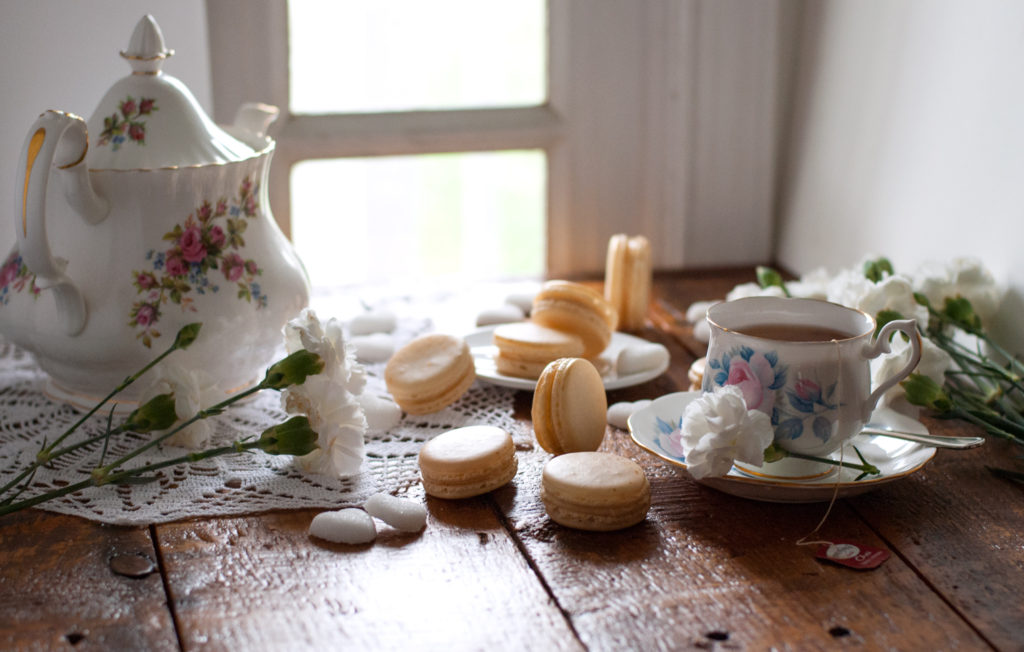
They don’t seem so scary when you know they are just cookies, do they?
You did it. And I’m just so proud of you.

Disclosure: This post may contain affiliate links, which just means that we get a few pennies if you purchase through our link. I never recommend products that I don't personally use and love. Thanks!
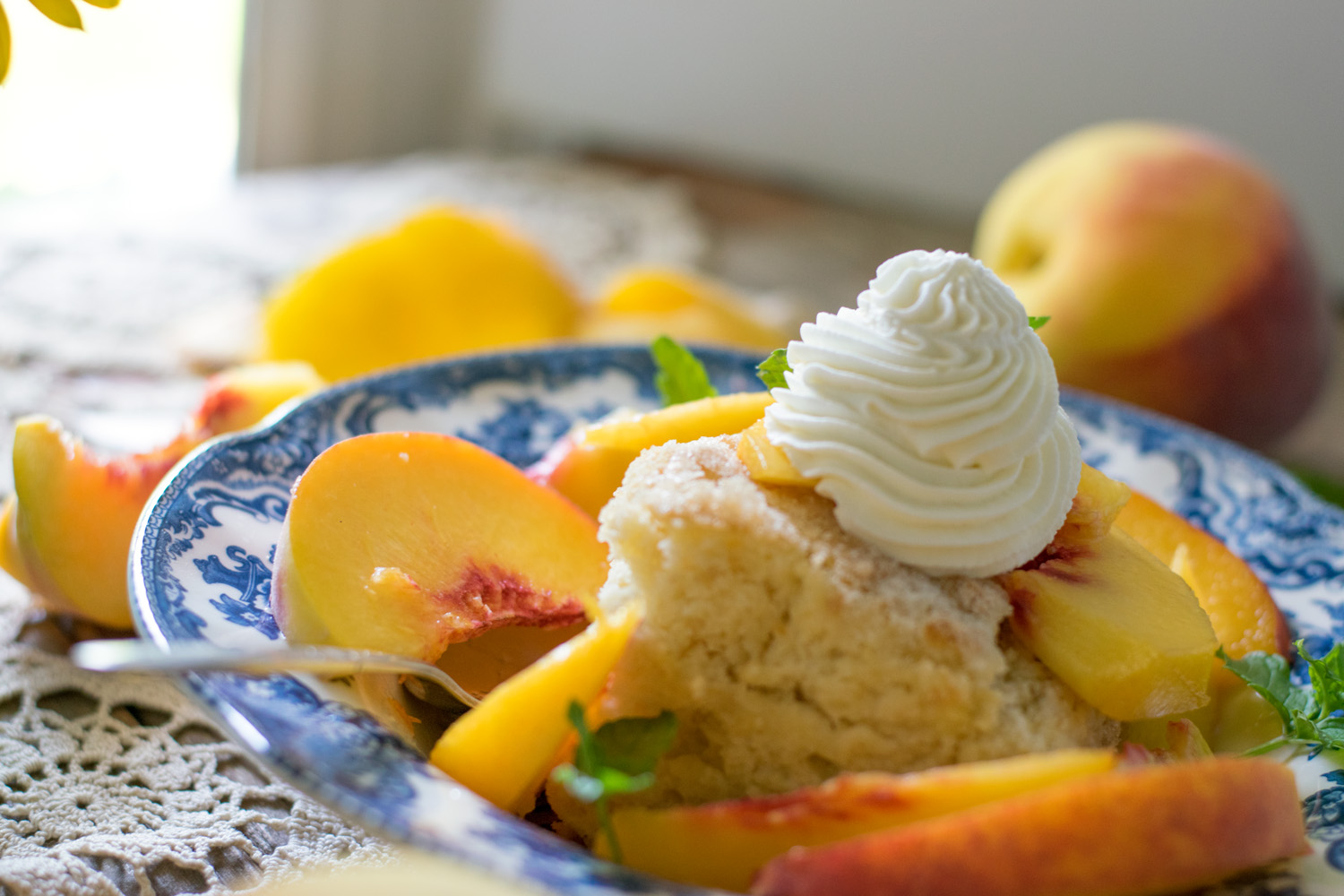
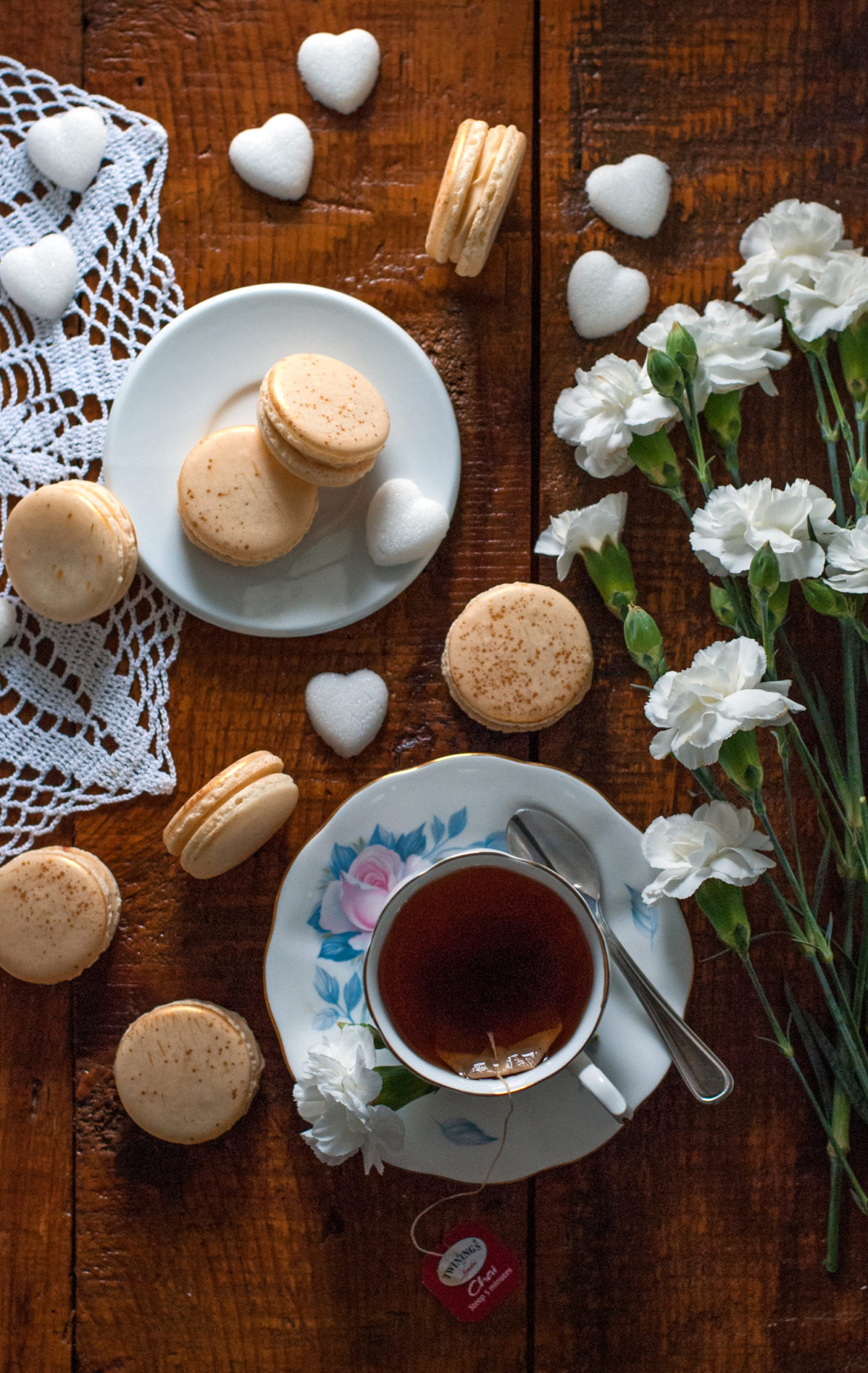

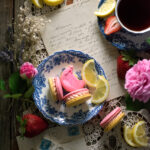



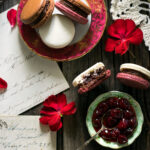
What a delightfull, humorous, and spot on post. I think you might be my spirit animal in blogger form. I live in a really dry climate so I’m thinking I can’t use the rainy day excuse. However I will fuss less about small hollows after this affirmation.
Haha! This comment made my day! Thank you! 🙂
Well, I found my problem. They were working out okayish 2 weeks ago, this week I can’t seem to get it right, even though my macaronage looks like it should as seen in like a dozen videos. But… I live in Belgium and it is raining for days now… Didn’t know the weather could mess up my baking plans so much, lol.
Ohhhhh yes. A rainy day will ruin them every time! When it’s a nice day I make extra shells and freeze them. Then I can make macarons in the rain just by filling the ready shells. 😉